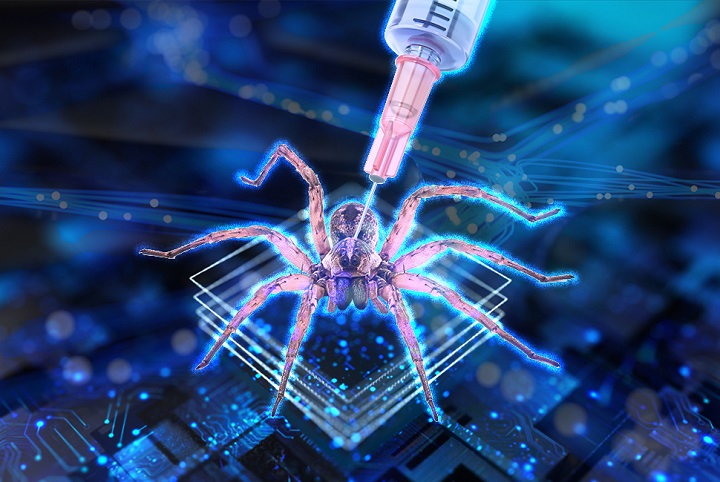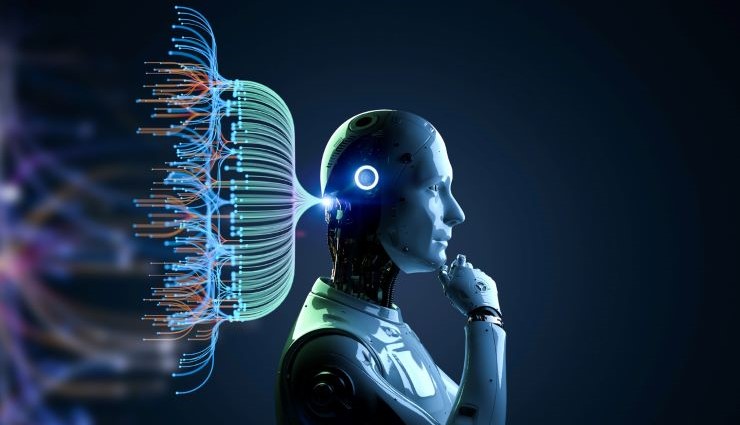Review your memories of several years ago. At that time, did you think that new technologies had the power to change the world? Or will artificial intelligence progress so much? If you pay attention to any moment, you will notice changes due to technology. Now imagine how today’s world, immersed in technology, will take shape with future technologies. In this article, we want to introduce technologies that will change the world soon.
1. Transplantation of animal organs to humans
This may sound scary, but it may revolutionize the medical world. This process, called “xenotransplantation,” includes any organ transplant and cell fusion from an animal source to a human. Interestingly, this work has been tested on two people. These experiments have transplanted pig hearts into humans after genetic modification. This technology has not yet reached a stable stage, and its success is not guaranteed, but it is expected that we will soon see improvements in this field.
2. Control the robot with your mind
You may have seen this in science fiction movies, but now mind-controlling the robot has been done in the real world. A group of researchers from the Federal Polytechnic University of Lausanne, Switzerland, using a machine learning algorithm, a robotic arm, and a brain-computer interface, have made a device for patients with tetraplegia or paralysis of four limbs. These patients could perform simple tasks such as moving objects using the robot.
3. Artificial intelligence
It is impossible to discuss future technologies without seeing artificial intelligence there. This technology is currently considered the best technology in the world and has affected various fields. Stephen Hawking, the famous physicist, said about artificial intelligence:
Artificial intelligence may become the biggest event in human history, as it may bring us closer to the end of human labor unless we learn how to avoid its dangers.
One area that has changed due to artificial intelligence is the art world. With artificial intelligence image generators, you can get the image you want, whatever it is, with just one sentence.
Another thing seen a lot these days, and the general public has started using it, is the processing of human languages with artificial intelligence. You have likely used or at least heard of the artificial intelligence chatbot called ” ChatGPT. ” This robot is a reflection of artificial intelligence and its future. With this robot, you can program, write books, prepare official emails, and do many other things.
4. Energy saving brick
The issue of energy supply and storage has always been one of the global challenges. Now, imagine being able to turn a brick into an energy store. Researchers at Washington University in St. Louis have turned cheap house-building bricks into bright bricks that store energy like batteries.
5. 3D printing
Seeing this title, you may say that 3D printing is unsuitable for future technologies. Despite this, we must say that 3D printing can revolutionize various industries. Everything is possible with 3D printing, from home appliances to food printing.
Now, Ossiform has succeeded in the 3D printing of bones. To use these bones, which are produced from tricalcium phosphate, a tissue-like bone, do an MRI and send the result to this company. Aciform Company designs the 3D model of the bone, and after printing, the artificial bone can be used in surgery.
Also, Columbia University researchers have made a device that prints a cheesecake consisting of banana, jam, peanut butter, and Nutella. This cheesecake is printed only with a laser; if the device advances, it will be possible to print personalized foods.
In addition to the above, the American National Eye Association has produced eye tissue using 3D printing to help treat macular degeneration. However, this technology may also be used for harmful purposes because weapons can be quickly made with 3D printing.
6. Necrobatic

Acrobatics is perhaps one of the scariest and strangest technologies of the future. This phrase is produced from the combination of 2 words, “necro” and “robotic,” which means turning dead creatures into robots. A team of researchers has turned a dead spider into a claw robot that can pick up objects. This technology is currently in its early stages, but if it develops, it will be possible to use dead animals in science.
7. Smartwatches that work with body sweat
Imagine having a smartwatch that is not made of harmful materials, does not harm the environment, and, most importantly, works with body sweat. Engineers at the University of Glasgow have made such a watch possible by creating a supercapacitor that works with body sweat. These supercapacitors are fully charged by absorbing only one-thousandth of a milliliter of liquid.
8. Production of fuel from air
Inspired by tree leaves, chemical engineers at the Polytechnic Federal University of Lausanne have created a prototype device that produces air-fueled fuel. Like a leaf, this device takes energy from sunlight and produces hydrogen gas by absorbing water in the air. This produced gas is finally converted into liquid fuel.
9. Direct absorption of carbon dioxide from the air
Trees are essential in absorbing carbon dioxide from the air and turning it into a helpful element. Now, one of the future technologies is similar to the function of trees. First, it absorbs carbon dioxide from the air, then traps it underground or makes synthetic fuel. This technology is already in use but requires a lot of energy and is not cost-effective.
10. Sand battery
Not all future technologies are weird and scary, and many are simple yet efficient. The sand battery is one of the technologies that will stir the energy field. Finnish engineers have found a way to turn sand into batteries. Sand batteries hold energy for a long time.
11. Green Burial
Did you know that the death of humans harms the environment? Every time a body is cremated, more than 400 kg of carbon dioxide enters the atmosphere. Green burial includes solutions that make human death not harmful to nature and are helpful. For example, turning a corpse into manure is possible in Washington, USA. There is another alternative technology that uses mushrooms. In this method, the corpse is placed among a particular type of mushroom that neutralizes the toxic substances caused by its decomposition.
12. Self-healing concrete
Using sand, gel, and bacteria, scientists have succeeded in producing concrete, which they call “living concrete.” This concrete is more compatible with the environment and, most importantly, can be repaired. Scientists at the University of Colorado Boulder believe these concretes are part of future technologies that can repair their cracks and absorb toxic substances from the air.
13. Digital twin
An American company has developed a scanner that measures hundreds of biomarkers almost every hour. For example, the status of hormones and the amount of liver fat are evaluated using this scanner. This scanner converts the received data into a digital 3D model of the patient’s body, a digital twin. The status of this digital twin can be tracked at any time and is updated every time a scan is performed.
14. Artificial neural network on a silicon chip
Scientists have found a way to implement artificial neurons on silicon chips. Their goal is to simulate the neurons of the human nervous system so that they can recreate their electrical properties. If this technology reaches the final stage of research and a way to supply energy to artificial neurons is found, we can hope for the treatment of Alzheimer’s and heart failure.
15. Electronic skin
Have you ever had a long-distance friend that you haven’t been able to see for a while? If you answer yes, wait for the technologies of the near future. Engineers at the City University of Hong Kong have invented a wireless electronic skin that lets you hug your loved ones remotely. This electronic skin is made of flexible mechanical actuators that receive the user’s movements and send them to another electronic skin after being converted into electronic signals. The destination e-skin gets the signals and converts them into vibrations that recreate the sensation of the first person’s movements.
16. public Internet
It may be hard to imagine life without the Internet. Despite this, half of the world’s population has no Internet access for various reasons. So far, multiple companies, including Facebook, have plans to make the Internet universal. Internet, the technology giant, is trying to use heliInternetons to bring the Internet to deprived areas. Meanwhile, another company has extended its Internet network to the low earth orbit with the help of microsatellites and has provided Internet access to all parts of the planet.
you say
With science’s progress, we witness the Internet’s convergence technologies daily. These technologies may have been seen only in movies and series, but now have become a reality. Future technologies, while scary, can create positive changes in various industries.
You have seen the changes in the world with the advancement of technology. How did you feel about the technologies mentioned in the article? Do you think these technologies will become widespread? Which do you think will have the most significant impact on the world?



